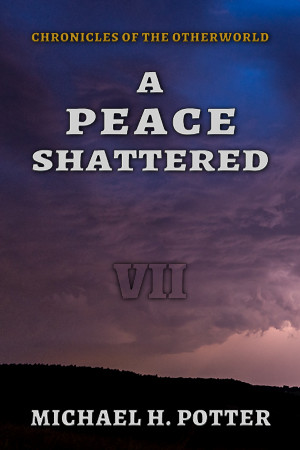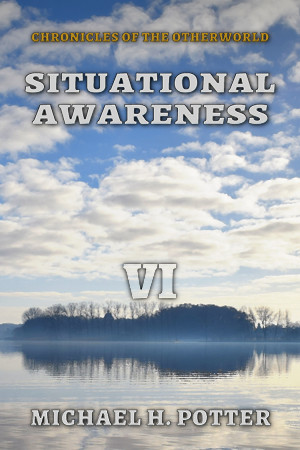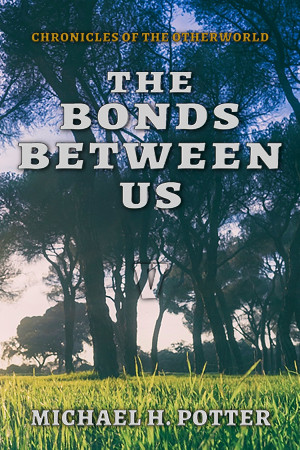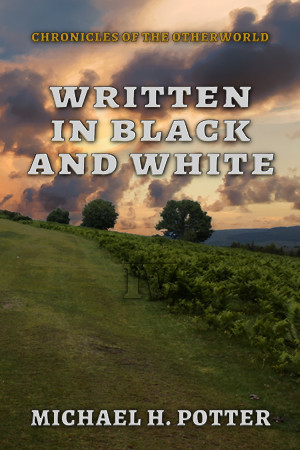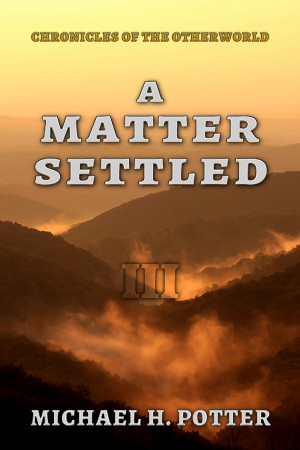If all goes well (as far in advance as I’m writing this, it may not), the third episode of the Chronicles of the Otherworld should have hit my Patreon page not too long ago, and that means it’s time for another little chat. This time around, I want to talk about my choices of characters.
The expedition
I decided on the full complement of the expedition very early on in my writing, and there was very little that changed in the long period between Episodes I and II. Sure, my scrapping of the original subsequent stories did shift some things around, but almost all of the “core” details of the twenty characters from Earth remained the same.
The idea of the “student dig” was pretty much the seed of the Otherworld saga. I needed a reason for all these college-age kids to be together, to be educated, and to be ready to survive. Thus the team was born, and the eleven who made the interplanetary journey were always going. I’ll admit a bit of convenience in the way that the older adults are absent (the storm in Out of the Past), but I think that’s well within the bounds of artistic license.
These eleven were the team from the start, and the seven POV characters were also chosen essentially before the first word of the series was written. Following my idea of this being a TV-style episodic drama, there are the requisite nods to diversity, though I do despise the often forced style that Hollywood seems to prefer. In this case, I don’t have a problem with it, because the framework of the story practically requires it. This is a university-sponsored archaeological expedition, so of course there will be a mix of men and women. They’re digging in Mexico, so it’s only natural that the party would include a Latino. Yes, the cast is diverse, but every member of the team has a reason to be there. They’re not just shoved in to fill a quota.
The main seven, in particular, have their positions for two reasons. One, I felt they had the best stories to tell, while the four “secondary” members of the party were mostly going to be in the background, largely overshadowed by others in the team. (Admittedly, this decision came about before some of those four went in wildly different directions than initially intended.) Second, though, each one, I feel, reflects a part of my own personality. They’re my own personal rainbow, in a sense.
The optimist
Amy is the first character introduced in the story, and she also has the distinction of being the last of the “main” cast to be the focus of a scene. (Yeah, that’s a spoiler for Long Road’s End. Sorry.) She’s an eternal optimist, something I sometimes wish I could be. I wouldn’t call her aloof or anything like that, though. She’s just one of those naturally happy people. She might be hesitant to try new things, but she’ll give it her all once she accepts them. Sometimes even more than that, as you’ll see in later episodes.
This optimism works as a narrative device, too. It takes a lot to get her upset, so when she finally is, that makes it even more powerful. (Hint: wait until Episodes V and VI.) Writing her chapters always cheers me up, because she has an…innocence about her that borders on childlike, especially when it comes to the wonders of the Otherworld. In a sense, Amy is how I wish I could see myself.
The linguist
Chronicles of the Otherworld, and indeed the whole Otherworld setting, was started as a linguistic playground, so it’s no wonder that I’d have a linguist as one of the main characters. At first, Jeff doesn’t really know what he’s doing, but he finds a purpose once it’s clear that somebody has to step up and be the communicator. You might think he’s there for no other reason, but he works as a kind of outsider—he’s not an archaeologist by trade, so he doesn’t really know all the rules. And (spoiler alert) he gets into some pretty hairy situations later in the series.
Jeff illustrates my own fascination with languages, obviously, but his role is more than that. He’s someone who can bear the brunt of the “info dumps” regarding the tongues of the Otherworld. Even better, as he’s the most knowledgable about them, his chapters tend to have fewer untranslated words and phrases. Unless, of course, he’s the one doing the translating.
The wanderer
Jenn has the third chapter in Out of the Past, and the first where the whole “alien artifact” thing is on display. Later on, in the Otherworld, she becomes the de facto leader of the wayward expedition. Now, I’m not a leader. Far from it. And I’m also not religious in the slightest, unlike this particular character. So she may not seem like that much of a reflection of me, but she is. As much as I hate to say it, she echoes my frustration with the world when it fails to live up to my expectations.
More than that, though, Jenn represents my burning desire to make things better. She doesn’t always succeed—I almost never do—but that won’t stop her from trying. When she has the narrative voice, it’s full of her thoughts about doing just that. (Wait till you see Episode VI!) Yes, she gets angry when she fails, but who doesn’t? Finally, Jenn is a challenge, because she’s one case where I’m way out of my comfort zone. By the end of the first season, she’s positively zealous. If I ever get that way, somebody needs to have me locked up.
The manager
Ryan’s fourth on the list, and he is somewhat of a conundrum. Again, he’s another leader type who is pretty much my exact opposite, and he’s also athletic, so even less like me. Still, he’s a character that fits me, because he looks at the world in much the same way I do. He’s a counterpoint to Jenn’s sometimes overbearing leadership style, and he has a certain charisma that leaves me envious.
Most of Ryan’s chapters tend to focus on the big picture, and that’s another way he reflects me. That’s my strategic and managerial thinking coming through, honed through all those years of playing building and strategy games. And he’s a bit of a diplomat, always looking to defuse an argument before it blows up in his face. That’s something I strive for, too.
The joker
Fifth in order of appearance is Lee. Storywise, he exists for one reason: the inhabitants of the Otherworld are descended from the indigenous population of the Americas, and so is he. He’s closer to them than any other member of the team, and I saw that as a great breeding ground for storylines. Then, as I began to flesh out his character, he became the comedian of the team, the kind of comedian whose best jokes are about himself.
Lee is sarcastic, even acerbic, and he has an edge to him that comes from the pivotal moments in his life. He knows he’s intelligent, but he’s not afraid to call himself stupid when things go awry. Out of all the men on the team, he’s probably the most emotional. In other words, he’s just like me, and that’s probably why his chapters tend to have the longest and most frequent thought sequences.
The thinker
Alex, by contrast, is me for a different reason: he’s how I see myself. Out of shape, introverted, he knows his place in society, and he’s grown to make it his own. He takes pleasure in others’ misfortune because he figures that’s the only kind he’s going to get. His internal monologues and narration are a lot like Lee’s, in fact, but with a lot more despair and self-loathing. In a way, he became my release valve for negative emotions, in the same way Amy is my indulgence in the positive.
Besides all the negativity, Alex is the closest thing the expedition has to a scientist, and that makes him more valuable there than he would be here. Lots of interesting character conflict there, although his is usually internal. Naturally, his chapters also tend to focus on the two worlds, the mechanism that sent them to the Otherworld, and how they can go home—later on, he even has to wrestle with the question of whether he wants to go back. And finally, I’ll admit that Alex later becomes a bit of wish-fulfillment on my part, especially once Season 2 gets started. You’ll see what I mean.
The enigma
Ashley is the last of the seven to receive her first chapter, though the second to get another. To start, she’s the “tough girl”, the classic girls-rule feminist who’s always looking for a reason to be offended. As she realizes that the Otherworld isn’t oppressive to women in particular—it oppresses everyone equally, for the most part—she does soften up, though she does have a number of moral constraints that she isn’t afraid to enforce on others. (And she has what she believes is a very dark secret, which comes out later in the season.)
How does she fit in? For the story, she’s the eyes and ears for the cultures of the Otherworld. That’s her specialty, so her chapters are full of such minutiae. She makes her own clothes (and hates every second of it), and she makes friends at the same time. How she connects to me, on the other hand, is a lot harder to say. I’m not friendly, and I’m pretty much the exact opposite of a feminist. But I’m interested in the way things fit together, the way people work, and that’s Ashley’s thing.
The rest
The other four main characters in the expedition don’t get to be the center of attention until the final chapter of Episode VIII. (Three of them get their own stories in A Bridge Between Worlds.) They’re secondary, and it shows. Mostly, they began as filler, so it took me a long time to “find” them.
Ayla began as a foil for Alex, but then I got the idea of her becoming a kind of mad scientist, which plays out later in the season and in her story. Ramón originally had no purpose other than to sprain his ankle in Episode III (in the rewrite, that’s Lee’s job), and Season 1 doesn’t give him a lot to do that doesn’t appear through the lens of Ryan. Sara does very little at all, but she’s a nice counter to Amy’s boundless enthusiasm. And Damonte might seem like the token black guy, but he’s anything but: for one, he knows that’s what he is. (Episode IV, coming next month, gives him a lot of screen time, but…don’t expect too much after that, at least until Bridge.)
The four professors were never intended to be much more than quest-givers, although William’s role has greatly expanded in Season 2. The same is mostly true for the others of the expedition, those five that didn’t go to the Otherworld. You won’t be seeing them again until Episode VIII, and most of them barely serve any purpose until Bridge or Season 2. Antonio, for instance, is basically just an extra, while Tyler becomes a bit of a running joke.
To be continued
Some of the characters might not be that important to the story, but all of them are important to me. As Chronicles slowly morphed into a character drama, the eleven unlucky students, their nine Earthbound companions, and the multitudes they meet in the Otherworld all had to become something more. The top seven, being the faces of the story, all exemplify different parts of me, yet they’re also their own people. The rest are left more to their own devices, but I hope I’ve done a good job of letting them all speak for themselves in their limited opportunity.
Technically, Episode IV (Written in Black and White) comes out this month, on the 29th. However, due to scheduling concerns, I’ll most likely post the fourth Otherworld Talk entry the week after, on or around Labor Day. By then, I might be deep into writing Season 2, or I may have given up. Who knows?
